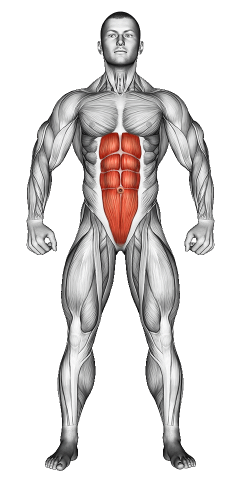Single Leg Plank: Video Tutorial & Exercise Guide

Written By: Claude Michael
Updated: Oct 13, 2024
| Workout | Single Leg Plank |
| Primary Muscle Group | Abs |
| Equipment Required | Bodyweight |
| Force Type | Static |
| Mechanics | Isolation |
| Exercise Type | Core Strengthening |
| Difficulty | Intermediate |
Single Leg Plank: Video Tutorial & Exercise Guide
- 1.Single Leg Plank: Muscle Groups
- -1.1Primary Muscle Group
- -1.2Secondary Muscle Group
- 2.Single Leg Plank: Step-by-Step Guide
- 3.Single Leg Plank: Overview
- 4.Single Leg Plank: Benefits
- 5.Single Leg Plank: Pro Tips & Advanced Techniques
- 6.Single Leg Plank: Progression Plan
- 7.Single Leg Plank: Frequently Asked Questions (FAQs)
Single Leg Plank: Step-by-Step Guide
- Step 1: Start in a high plank position with your hands directly under your shoulders, your body in a straight line from head to heels. Engage your core and keep your legs straight.
- Step 2: Once you're stable, lift your right leg off the ground, keeping it extended and maintaining your balance. Engage your glutes and core to keep your body stable.
- Step 3: Hold this position for the desired amount of time, making sure your hips remain square to the ground and your core is fully engaged.
- Step 4: Lower your right leg back to the ground and repeat the movement on the left side, lifting the left leg while maintaining proper plank form.
- Step 5: Continue alternating legs or hold each side for a set time, focusing on keeping your body aligned and preventing any hip rotation.
Single Leg Plank: Overview
The Single Leg Plank is a core exercise that adds an extra challenge to the traditional plank by requiring you to lift one leg off the ground. This movement increases core engagement and stability by forcing your body to balance on three points of contact, which strengthens your core, glutes, shoulders, and lower back.
It's a great way to improve balance, stability, and overall core strength, making it an effective addition to any workout routine. The Single Leg Plank is suitable for all fitness levels and can be modified to match your current ability.
Single Leg Plank: Benefits
The Single Leg Plank increases the demand on your core compared to the traditional plank, making it a more challenging exercise for improving overall core strength and stability. By lifting one leg, you also activate your glutes and hamstrings, further enhancing lower body strength.
This movement also helps improve balance and coordination as it requires you to maintain stability with fewer points of contact on the ground. It’s excellent for developing functional strength that translates into better performance in other exercises and daily activities.
Additionally, the Single Leg Plank strengthens the stabilizer muscles around your shoulders, helping to improve posture and reduce the risk of injury in the upper body.
Single Leg Plank: Pro Tips & Advanced Techniques
Focus on keeping your body aligned and your hips square to the ground while performing the Single Leg Plank. Avoid letting your hips rotate or sag. To increase the difficulty, try holding the lifted leg higher or adding ankle weights for added resistance. For an additional challenge, extend the time you hold each leg up. Ready to test your core stability? Let’s plank!
Single Leg Plank: Progression Plan
Beginner
Intermediate
Advanced
Single Leg Plank: Frequently Asked Questions (FAQs)
What muscles does the Single Leg Plank target?
+This exercise primarily targets the core muscles, including the rectus abdominis and obliques, as well as the glutes, hamstrings, shoulders, and lower back.
Is the Single Leg Plank suitable for beginners?
+Yes, beginners can start with shorter hold times and lower leg lifts, focusing on maintaining proper plank form and stability. As strength improves, they can increase the duration and leg height.
How can I make the Single Leg Plank more challenging?
+To increase the difficulty, try holding the plank for longer periods, lifting your leg higher, or adding ankle weights. You can also perform the movement with your opposite arm lifted off the ground for extra core activation.
How often should I include the Single Leg Plank in my routine?
+You can perform Single Leg Planks 2-3 times a week as part of your core or full-body routine. It pairs well with other stability exercises like side planks or glute bridges.
What common mistakes should I avoid?
+Avoid letting your hips rotate or sag while holding the plank. Focus on engaging your core and glutes to maintain a straight, stable position throughout the exercise.
Share
Don’t Wish for It, Work for It – Join the FlexXP Newsletter Today!
Thank you for signing up for the FlexXP Newsletter!
This site is protected and the Google Privacy Policy and Terms of Service apply.
